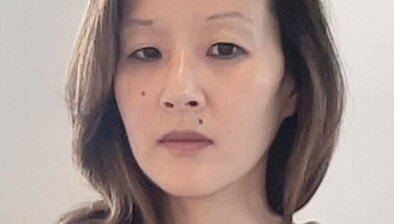Opinion: Crime victims’ right to compensation requires reform following welcome CJEU ruling

Dr Liam O'Driscoll
Dr Liam O’Driscoll highlights the need for EU-wide reform following a CJEU ruling on an Irish case concerning the compensation of victims of crime for pain and suffering.
The Court of Justice of the European Union (CJEU), on 2 October 2025, issued a judgment concerning the scope of Member States’ requirements to provide “fair and appropriate compensation” under Article 12(2) of Directive 2004/80/EC.
In LD v Criminal Injuries Compensation Tribunal & Ors, the CJEU held that Article 12(2) obligates Member States to provide both material and non-material damages, including compensation for pain and suffering, to victims of violent crime under their respective state compensation schemes.
Whilst the CJEU’s judgment in these proceedings expands on its previous jurisprudence in this area, I argue that LD does not provide adequate guidance for Member States in relation to their obligations, which in turn is likely to result in continuing disparities in state compensation provision across the EU.
Recognising that the CJEU’s jurisprudence in this area has been quite influential in reforming the Irish state compensation scheme, I maintain that wider legislative reform at an EU level is needed to properly provide for the needs of crime victims.
Recognising a right to state compensation
Prior to LD, the CJEU had provided clarification in respect of the “fair and appropriate compensation” requirement.
In BV, the CJEU held that Article 12(2) applies to all victims of violent crime in the EU. Previously, this requirement was understood to apply only to individuals injured as a result of violent crime who were exercising their freedom of movement rights within the EU.
The BV judgment, therefore, is a seminal decision of the CJEU which greatly expanded EU level protections for the vast majority of victims of crime who are in a wholly domestic situation.
BV also clarified that state compensation schemes, when assessing compensation, must take into account the seriousness of the consequences for the victim of the particular injuries sustained (para 63), and must “compensate to an appropriate extent the suffering to which [victims] have been exposed” (para 64).
Such compensation must represent “a contribution to the reparation of material and non-material losses suffered” by victims (para 69).
According to the Irish Court of Appeal (para 79) and the Irish Law Reform Commission (para 4.13), BV established an EU right to state compensation for all victims of violent crime.
BV has the capacity to greatly expand the scope of state compensation schemes in the Member States.
In 2024, the BV ruling was expanded upon in Burdene where the CJEU held that, in fatal cases of violence, state compensation schemes cannot automatically exclude certain categories of family members, in this case the parents and siblings of the deceased, from receiving compensation due to the presence of other family members, in this case the surviving spouse and children of the deceased, unless the individual circumstances of each fatal case are examined (para 65).
Factual background concerning LD
With the implications of BV still being uncertain at Member State level, the CJEU’s judgment in LD arose as a result of a reference for a preliminary ruling from the Irish High Court.
These proceedings arose following an assault perpetrated against LD in 2015 which resulted in him suffering a permanent eye injury and other serious physical and mental injuries. LD submitted an application under the Criminal Injuries Compensation Scheme (CICS), and was awarded a mere €645.65, representing various out-of-pocket expenses incurred.
The CICS was first established in 1974 but compensation for non-material damages, or compensation for pain and suffering, was removed from the CICS in 1986 due to budgetary challenges arising from an economic crisis in Ireland in the 1980s. LD, therefore, was not entitled to non-material damages.
In LD, the High Court sought clarification as to whether BV does indeed require Member States to pay both material and non-material damages.
The High Court also asked what relationship state compensation has to offender compensation awarded under tort law in light of the financial viability of national schemes.
Finally, the High Court asked whether €645.65 amounted to fair and appropriate compensation in the circumstances.
Non-material damages must be provided
On the question of whether non-material damages should be available to victims, the CJEU in LD referenced its previous judgments in both Burdene and BV that state compensation must not be purely symbolic or manifestly insufficient having regard to the seriousness of the consequences for the victim of the crime (para 28).
Additionally, the CJEU repeated its previous statements that compensation must contribute to material and non-material losses and can only be considered fair and appropriate “if it compensates, to an appropriate extent, the suffering to which those victims have been exposed” (para 27).
Acknowledging that Article 12(2) does not expressly make reference to the types of harm which should be compensated (para 29), the CJEU referred to both Article 2 of the Victims’ Rights Directive and Article 3 of the EU Charter of Fundamental Rights, to strengthen its BV and Burdene rulings in relation to the provision of non-material damages.
Concerning the Victims’ Rights Directive, the CJEU examined the definition of a victim under Article 2 which includes “a natural person who has suffered harm, including physical, mental or emotional harm or economic loss which was directly caused by a criminal offence”.
In emphasising the types of losses which victims endure, the CJEU relied on Article 2 to find that state compensation under Article 12(2) of Directive 2004/80/EC must include material and non-material damages, which encompasses compensation for pain and suffering (paras 30-31).
In relation to Article 3 of the EU Charter, concerning the right to integrity, the CJEU held that as “the integrity of the person must be understood as being both physical and mental”, Article 12(2) requires Member States to compensate victims in respect of their pain and suffering (paras 35-36).
In this regard, the CJEU held that, subject to review by the Irish High Court, the compensation awarded to LD cannot be fair and appropriate as it does not encompass non-material damages (para 38).
The relationship with offender compensation
The CJEU also addressed the relationship between state compensation and offender compensation.
The CJEU repeated its dicta from its Burdene judgment, and indeed statements made by the Advocate General in BV, that “compensation need not necessarily correspond to the damages which may be awarded against the perpetrator of the offence” and state compensation “is not necessarily required to ensure the complete reparation of material and non-material loss suffered by that victim” (para 24).
Here, the CJEU made reference to the margin of discretion afforded to Member States to determine what amounts to “fair and appropriate compensation” in light of the need to safeguard the financial viability of national schemes (para 25).
The CJEU added an additional proviso to its approach concerning the link between state and offender compensation; that when assessing ‘fair and appropriate compensation’ for victims, Member States must take account “of the reparation that such victims may obtain on the basis of the tortious liability of the offender” (para 39).
Here, it appears that the CJEU has gone further than its previous judgments in both Burdene and BV, in that Member States, when determining state compensation, must examine what victims are entitled to vis-a-vi the offender.
Despite this, whilst it is of course reasonable, as the CJEU point out, that national authorities should have discretion to determine the exact amount of state compensation in individual cases, the CJEU’s ruling in this regard lacks detail, and consistency, in relation to the precise relationship between state and offender compensation.
On the one hand, the CJEU is advising that state compensation is subsidiary to offender compensation (para 20) and does not necessarily have to correspond to offender compensation and complete reparation of material and non-material losses do not have to occur.
On the other hand, the CJEU is stating that Member States must take account of the offender’s tortious liability when determining state compensation under Article 12(2).
After making the request for a preliminary ruling, it is reasonable to conclude that the referring court still is not in possession of sufficient guidance on the relationship between state and offender compensation, and therefore, the specific amount of non-material damages which is fair and appropriate.
Implications of LD
The CJEU’s judgment in LD is to be welcomed for clarifying the extent of Member States’ obligations under Directive 2004/80/EC in relation to non-material damages and compensation for pain and suffering.
Further guidance would be welcome, however, on the relationship between state and offender compensation and the balance to be struck between the need to safeguard the financial viability of national schemes, on the one hand, with the necessity of granting proper state compensation to victims in line with what they are entitled to from the offender.
Ultimately, this balance remains within the discretion of Member States which is likely to result in continuing disparities across the EU in terms of access to state compensation.
Whilst LD is likely to lead to net gains for victims in terms of increasing the amounts of compensation available, especially in an Irish context, further litigation at national court and CJEU levels may be necessary as Ireland and other Member States take account of LD.
In this regard, it is unfortunate that the European Commission has neglected to strengthen EU-wide minimum standards in respect of state compensation as part of its ongoing efforts to reform the EU victims’ rights architecture.
- Dr Liam O’Driscoll is an assistant lecturer in law at the Technological University of the Shannon, Limerick. This article was developed as part of this author’s PhD in Dublin City University which was funded by Research Ireland.








